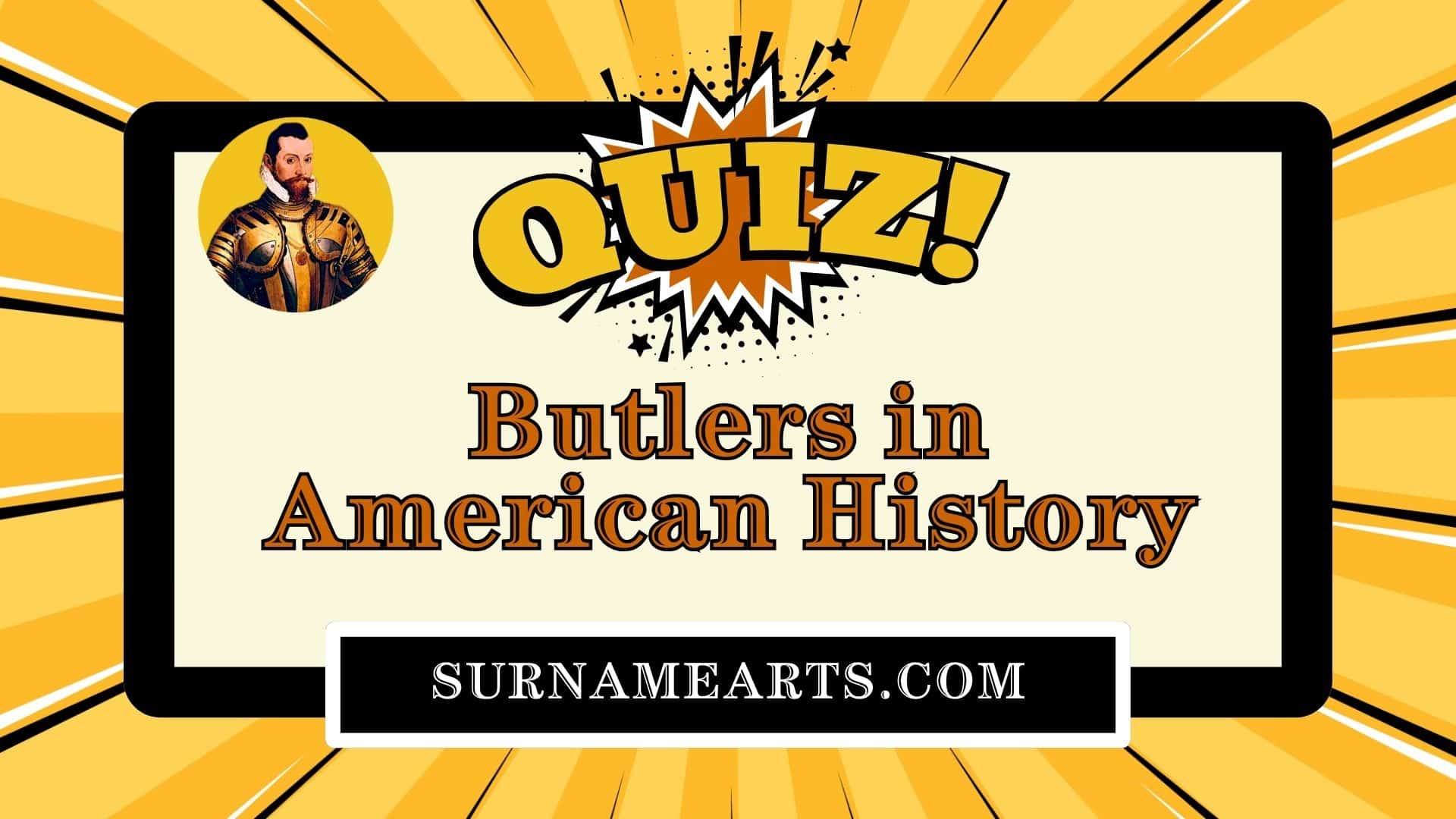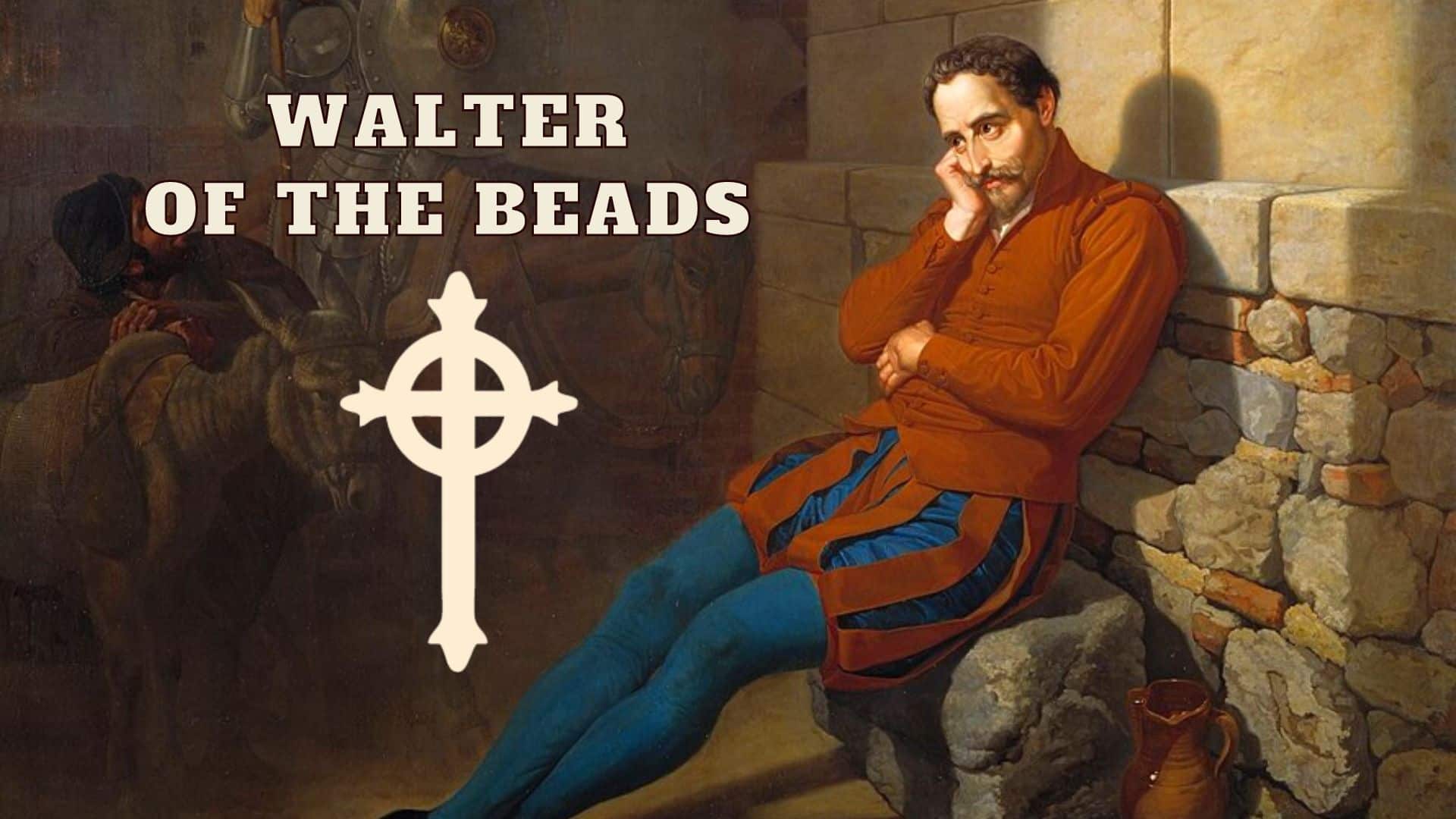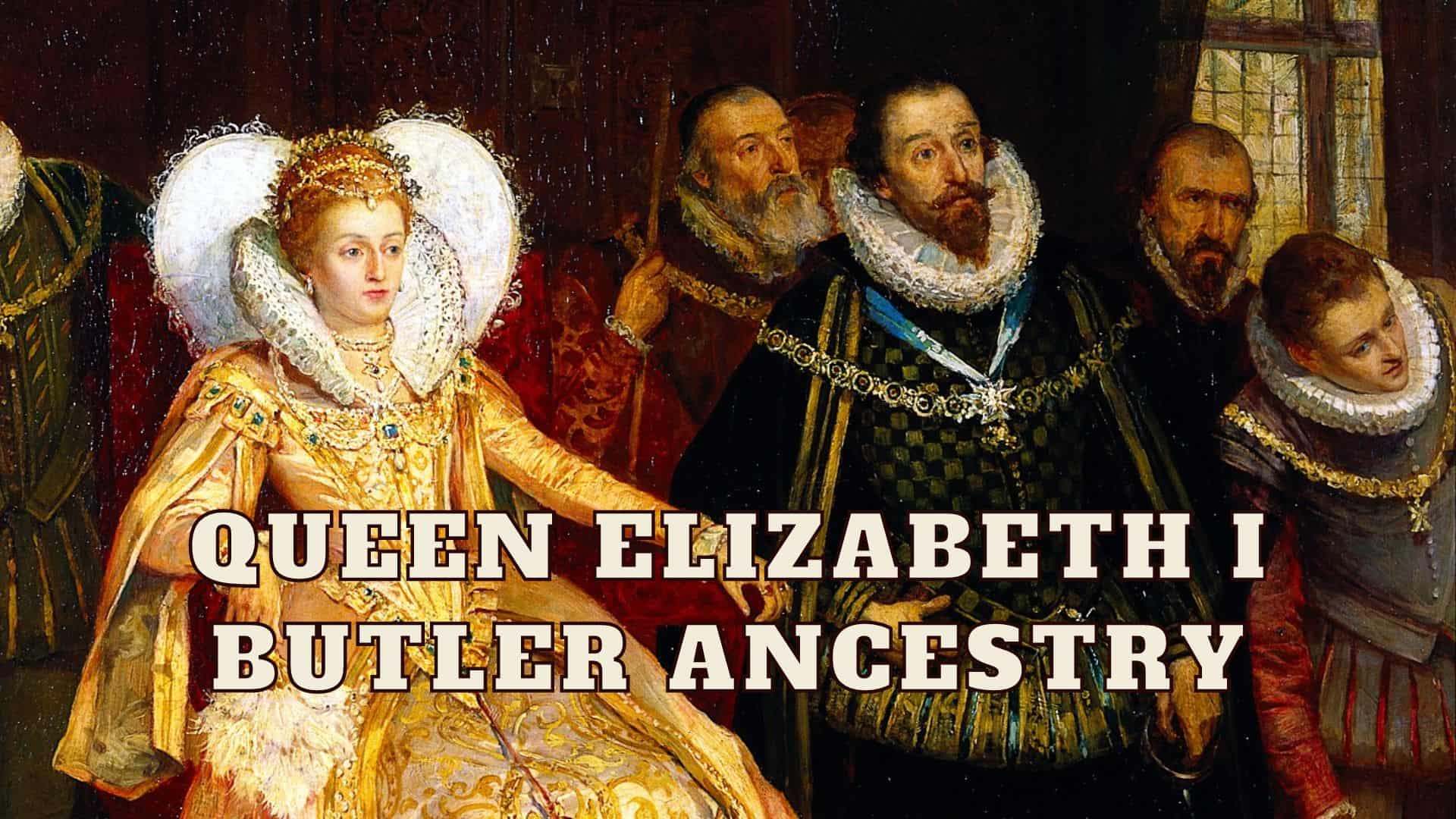
Part 1 of a documentary series that profiles the Butler family and the Earls of Ormond. The earldom of Ormond has been created three times in the Peerage of Ireland (1328, 1529, and 1538).
James Butler, 1st Earl of Ormond (c.1305-1338)
After his father’s death, James was summoned to the English court where he was raised. He adapted well to court life, did homage for his lands while he was still under age, and was knighted in March of 1326.
In 1327, he married Lady Eleanor Bohun, the granddaughter of King Edward I and a relative of King Edward II and III. This was a pivotal moment in Butler family history. By marrying into the King’s family, James largely ensured that the Butlers would continue to enjoy the titles and wealth provided by the crown for roughly the next 500 years. This, in turn, allowed generations of Butler sons and daughters to marry into other families with wealth and power.
To underscore the importance of the marriage, James was given the English castle and manor of Kilpec, Hereford. More importantly, Edward III granted James royal rights, called palatinate rights, in the Ormond region of County Tipperary, Ireland, and gave him the hereditary title of 1st Earl of Ormond.

The palatinate rights meant that Butlers received the regalities, liberties, knight’s fees, and other royal privileges of County Tipperary for life. They could even appoint sheriffs and judges in the county. It was said that the Butlers ruled Ormond almost like kings.
James died when he was about 33 years old. His time in Ireland was mainly spent defending his lands in Tipperary from increasing conflicts with his native Irish neighbors. But, he also served in King Edward III’s Scottish campaign during the years 1335 and 1336.
James and Eleanor had six children; four of them survived infancy. Their offspring created many of the most distinguished families in both Ireland and England. The Butlers were Earls, Marquesses, and Dukes of Ormond. The Earl of Ossory, Earl of Glengall, Viscount of Thurles, Viscount of Mountgarrett, Baron Dunboyne, and Baron Cahir were all titles held by members of the family.
Butler family land holdings encompassed most of the modern counties of Tipperary, Kilkenny, and parts of County Carlow. Only the earldom of Desmond, held by the Fitzgerald family, the chief rivals of the Butlers, would have had more land than the Butlers in Ireland.
James Butler, 2nd Earl of Ormond (1331-1382)
In 1331, James’ son, the 2nd Earl of Ormond, was born. This James was a young boy when his father died and was placed in the care of Maurice Fitzgerald, 1st Earl of Desmond, and later became the ward of Sir John Darcy, a justiciar of Ireland.
After receiving his hereditary earldom, James was often called The Noble Earl, because he was a great-grandson, through his mother, of King Edward I.
James fought in France in 1347 and Scotland in 1355, but he spent most of his military career in Ireland, where he became one of King Edward III’s most trusted advisors. He waged several battles, killing 600 of Mac Murrough’s followers at Teigstaffen in County Kilkenny and clashing with Maurice Fitzgerald, 4th Earl of Kildare. He was able to use his position as Earl to generally keep the peace with both native and Anglo-Irish, but he spent a lot of his time simply protecting Butler family land in Munster.
As a statesman, James was appointed Lord Deputy of Ireland to Lionel of Antwerp, First Duke of Clarence, who placed a great deal of trust in him. He was eventually made Lord Justice of Ireland and remained a powerful political leader through the 1360s and 1370s.
In 1373, James was able to secure a permanent grant of the liberty of Tipperary. The liberty meant that the rights in that area normally reserved for the king now belonged to James. This further cemented the Butler family’s authority in the region.
James married Elizabeth Darcy, the daughter of Sir John Darcy, who had been his guardian, and they had five children. His two daughters married into the FitzGerald and O’Carroll families to neutralize the threat those families posed to his Tipperary holdings. His son, James Butler, became the 3rd Earl of Ormond.
James Butler, 3rd Earl of Ormond (c.1359-1405)
James the 3rd’s claim to family fame was real estate and baby-making. In 1385, James built Gowran Castle near the center of Gowran in County Kilkenny as the family’s main residence. Given his stature in the community, many people at the time referred to him as the Earl of Gowran.

But it was in 1391 that James made his most astute real estate purchase, purchasing Kilkenny Castle and a large portion of County Kilkenny. From Kilkenny, the Butlers claimed overlordship of the surrounding Gaelic kingdoms of Ormond, Éile, Ikerrin, and parts of Osraige. Kilkenny Castle became the primary home for the Butler family in Ireland for the next 576 years until 1967, when the 23rd Earl of Ormond handed the castle over to the people of Kilkenny.
On the diplomatic front, James was appointed Governor of Ireland, Lord Justice of Ireland, keeper of the peace, and Governor of Counties Kilkenny and Tipperary over the course of his lifetime. He was well-versed in the Gaelic language and law and used both whenever it suited him. He is said to have acted as a Gaelic interpreter for Richard II.
James married twice and had 10 children, including one illegitimate child by a mistress that, in turn, created several new and important Butler family lines. His children included James Butler, the 4th Earl of Ormond; Sir Richard Butler of Polestown, County Kilkenny, whose Godfather was King Richard II of England; James “Gallda” Butler, the patriarch of the Cahir branch of the Butler family, who were enobled as Barons of Cahir; and Thomas le Boteller, the illegitimate child, also known as Thomas the lame. Thomas was a distinguished soldier who led an Irish force of 700 men and became Lord Deputy of Ireland.

James died in Gowran Castle in 1405 and is buried in St. Mary’s Collegiate Church in Gowran together with his father, James Butler, 2nd Earl of Ormond; his grandfather, James Butler, 1st Earl of Ormond; and his great-great-grandfather, Edmund Butler, Earl of Carrick and 6th Chief Butler of Ireland.
James Butler, 4th Earl of Ormond (1393-1452)
James, the 4th Earl of Ormond, was known as the “White Earl.” He was highly educated for his time and probably the most Gaelicised member of the Butler family. He was an Irish speaker; he was the patron of “The Book of the White Earl,” which consisted of 12 folios created by Gaelic scribes and inserted into “The Book of Pottlerath” in the 1400s; and he gave land to the College of Heralds to advance the study of heraldry and Irish culture.
James’ command of Irish culture gave him a strong power base in Ireland. But, to further his ambitions, he knew he had to increase the family’s connections and influence in England. His first order of business was marrying Joan Beauchamp, the daughter of William Beauchamp, Lord Abergavenny, in 1413.
When their first son, not surprisingly named James, was born, they sent him to be raised in the court of Henry VI. Ironically, this would have unintended consequences later on because his sons would spend the majority of their lives in England, which created a vacuum of power in Ireland and threatened the Butler dynasty.
Career-wise, James 4 was appointed Lord Deputy of Ireland and then Lord Lieutenant of Ireland after attending King Henry 5 in his French campaigns and becoming one of his close confidants.
Unfortunately, James’ tenure as Lord Lieutenant was marked by a feud with the Talbot family. John Talbot, the 1st Earl of Shrewsbury, along with his brother, Richard, Archbishop of Dublin, made a long list of grievances against James, including vague references to treason, to the Privy Council, which was a committee of the monarch’s closest advisors. James defended himself vigorously and the council took no action against him. The feud was eventually settled and friendly relations resumed between the families when James’ daughter Elizabeth married Shrewsbury’s son and heir, John.

In addition to the Talbot family feud, James also feuded with members of the Fitzgerald family and Richard Wogan, the Lord Chancellor of Ireland.
Wogan complained that he could no longer endure the “heavy lordship” of James 4. This feud became so bitter that it was seriously suggested that they settle their differences through trial by combat, whereby the winner was presumed to be “right.” King Henry VI had to personally intervene and persuade them into making peace.
On the family real estate front, James built the castles of Nenagh, Roscrea, and Templemore in north County Tipperary and Tulleophelim in County Carlow. He also furthered the Butler family’s wealth through his second marriage to Elizabeth Fitzgerald, the daughter and heir of Gerald Fitzgerald, the 5th Earl of Kildare. When his father-in-law died without a surviving son, he claimed possession of two-thirds of the earldom of Kildare.
James died in 1452. Many historians believe that he was the single most dominant figure in Irish politics in the first half of the fifteenth century. His knowledge of the mechanisms of government, coupled with his understanding of native Irish culture and people, was indispensable to the Kings of England that he served. If you had to assign a fault to him, it was his tendency to get into long-running feuds.
James Butler, 5th Earl of Ormond (1420-1461)
When James the 4th Earl died in 1452, his son James became the 5th Earl of Ormond. This is the James that was sent to England as a child to increase the family’s connections and influence in England. For a while, that strategy paid off. When he was about 7 years old, James was summoned to the court to be a childhood companion for the future King Henry VI. He and Henry remained friends throughout their lives.
James used his friendship with Henry VI and his knowledge of the court and royal patronage to accumulate tremendous wealth. Some of that wealth came in the form of lands inherited by his wife, Avice Stafford, who he married around 1438.
As one might expect, James held a slew of titles and high positions, including Royal Councillor, Lord Deputy of Ireland, Lord Lieutenant of Ireland, Lord High Treasurer of England during the Great Bullion Famine and the Great Slump in England, and Knight of the Garter. In recognition of his Lancastrian loyalty, King Henry VI created the Earl of Wiltshire in the Peerage of England for James. So, he had two earldoms.
When the Wars of the Roses broke out, pitting the Lancastrians against the Yorkists for control of the throne of England, James used his Irish ties to recruit Gaelic troops to fight in England for the Lancastrians. He was present at the First Battle of St Albans; the Battle of Wakefield; the Battle of Mortimer’s Cross; and the Battle of Towton.
The Battle of Towton was the bloodiest battle to ever take place on English soil and a significant turning point in English history. It saw the Yorkists win a decisive victory, resulting in Edward IV taking the English throne from King Henry VI.
The victorious Yorkists accused James of treason, which was often the charge against anyone that opposed the winning side. In a surprise to no one, he was found guilty and beheaded in 1461. He died without legitimate children.
As further punishment for being on the losing side, the titles, lands, and dozens of castles and manors in England and Ireland that belonged to James and his younger brothers, John and Thomas, were attainted, which means forfeited, by the English Parliament due to the conviction for treason. This was the first significant reversal of fortune for the Butler family since Theobald Fitzwalter was named Chief Butler in 1185.

Margaret of Anjou reportedly once let her 7-year-old son choose the method of execution for two captured Yorkists; he chose beheading.
Recommended Readings
- Beresford, D. (2009, October 1). Butler, James | Dictionary of Irish Biography.
- James Butler, 5th Earl of Ormonde and Earl of Wiltshire (1420-1461) [Wars of the Roses]. (n.d.).
- Empey, C. A., and Katharine Simms. “The Ordinances of the White Earl and the Problem of Coign in the Later Middle Ages.” Proceedings of the Royal Irish Academy. Section C: Archaeology, Celtic Studies, History, Linguistics, Literature, vol. 75, 1975, pp. 161–87. JSTOR.
- Miller, F. P., Vandome, A. F., & McBrewster, J. (2010). Butler Dynasty.
- Books, H. (2011). Articles on Irish Jacobites, Including. Hephaestus Books.
- James Butler, 4th Earl of Ormond – Google Arts & Culture. (n.d.). Google Arts & Culture.
- Feature Image Credit (Coronet of a Earl): W3C-unspecified vector image was created with Inkscape. – Own work, CC BY-SA 3.0.











